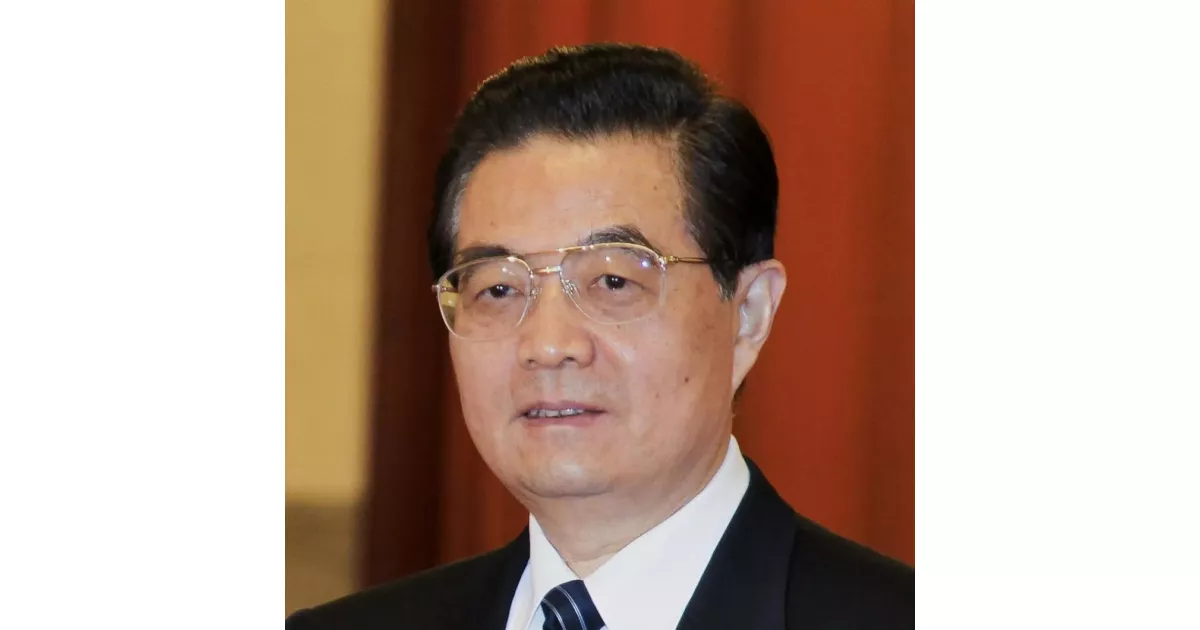Hu Jintao is a retired Chinese politician who held significant leadership positions, including General Secretary of the CCP (2002-2012), President of China (2003-2013), and Chairman of the Central Military Commission (2004-2012). He was a member of the CCP Politburo Standing Committee (1992-2012) and served as China's paramount leader from 2002 to 2012, playing a crucial role in the country's political and economic development during that period.
December 1942: Hu Jintao's birth
Hu Jintao was born in December 1942 and is a retired Chinese politician.
1949: Communist Party assumed power
Hu Jintao was one of the youngest PSC members since the Communist Party assumed power in 1949.
1959: 30th anniversary of the 1959 Tibetan uprising
5 March 1989 was five days before the 30th anniversary of the 1959 Tibetan uprising
April 1964: Joined the Chinese Communist Party
In April 1964, Hu Jintao joined the Chinese Communist Party (CCP).
July 1965: Began working as an engineer
In July 1965, Hu Jintao began working as an engineer after graduating from Tsinghua University.
1968: Volunteered service in Gansu
In 1968, during the Third Front construction, Hu Jintao volunteered for service in Gansu and worked on the construction of Liujiaxia Hydroelectric Station.
1969: Started working for Sinohydro Engineering Bureau
In 1969, Hu Jintao began working for Sinohydro Engineering Bureau.
1970: Married Liu Yongqing
In 1970, Hu Jintao married Liu Yongqing, whom he had met at Tsinghua University.
1973: Transferred to Construction Department of Gansu
In 1973, Hu Jintao was transferred to the Construction Department of Gansu as a secretary.
1974: Continued working for Sinohydro Engineering Bureau
In 1974, Hu Jintao was still working for Sinohydro Engineering Bureau.
1980: Deng Xiaoping implemented the "Four Transformations" program
In 1980, Deng Xiaoping implemented the "Four Transformations" program and Song Ping discovered Hu Jintao and promoted him several ranks.
1982: Promoted to Communist Youth League Gansu Branch secretary
In 1982, Hu Jintao was promoted to the position of Communist Youth League Gansu Branch secretary and was appointed as the director of the All-China Youth Federation.
1985: Transferred to Guizhou as provincial Committee secretary
In 1985, Hu Jintao was transferred to Guizhou as the provincial Committee secretary of the Chinese Communist Party.
1987: Handled local students protest carefully
In 1987, Hu Jintao carefully handled the local students protest in Guizhou, in contrast to the protests in Beijing that led to Hu Yaobang's resignation.
1987: Hu Yaobang was purged
In 1987, Hu Yaobang was purged by Deng Xiaoping due to his 'liberal' tendencies.
1988: Transferred to Tibet Autonomous Region
In 1988, Hu Jintao was transferred to become Party Regional Committee secretary of the Tibet Autonomous Region and Political commissar of the local People's Liberation Army units.
February 1989: Deployment of People's Armed Police into Lhasa
In February 1989, Hu Jintao responded to growing unrest and ethnic conflict by deploying some 1,700 People's Armed Police into Lhasa.
March 1989: Serious rioting in Lhasa
On 5 March 1989, serious rioting broke out in Lhasa. Martial law was declared on 8 March at Hu's request.
June 1990: Experienced high-altitude sickness
In June 1990, Hu Jintao experienced high-altitude sickness in Tibet and returned to Beijing.
October 1992: Became member of Politburo Standing Committee
In October 1992, Hu Jintao became the youngest member of the seven-member Politburo Standing Committee.
1992: Became leading member of the Secretariat of the Chinese Communist Party
In 1992, Hu Jintao became a leading member of the Secretariat of the Chinese Communist Party, overseeing day-to-day operations and the Central Party School.
1992: Joined CCP Politburo Standing Committee
In 1992, Hu Jintao became a member of the CCP Politburo Standing Committee.
1992: ROC President Chen Shui-bian repudiated the 1992 Consensus.
In 1992, ROC president Chen Shui-bian repudiated the 1992 Consensus, calling for talks without any preconditions. Chen Shui-bian and the Democratic Progressive Party (DPP) continued to express an ultimate goal of de jure Taiwanese independence.
1998: Became Vice President of China
In 1998, Hu Jintao became the Vice President of China and promoted Jiang's "Three Stresses" movement.
1999: China's leading voice during the bombing of the Chinese embassy in Belgrade
In 1999, Hu Jintao became China's leading voice during the United States bombing of the Chinese embassy in Belgrade.
2001: Publicized Jiang's Three Represents theory
In 2001, Hu Jintao publicized Jiang's Three Represents theory.
November 2002: Became CCP General Secretary
In November 2002, Hu Jintao became the CCP general secretary, making him the paramount leader of China.
2002: Became General Secretary of the CCP
In 2002, Hu Jintao became the general secretary of the Chinese Communist Party (CCP).
2003: SARS outbreak and dismissal of officials
In 2003, during the SARS outbreak, Hu Jintao dismissed several party and government officials, including the health minister and the Mayor of Beijing, due to initial cover-up and slow response to the crisis.
September 2004: Jiang Zemin resigned as CMC chairman
In September 2004, Jiang Zemin resigned as CMC chairman, after which Hu Jintao took on the three institutions in the People's Republic of China where power lay: the party, the state, and the military.
2004: Became Chairman of the Central Military Commission
In 2004, Hu Jintao became the chairman of the Central Military Commission (CMC).
2004: Listed on Time 100
In 2004, Hu Jintao was listed on the Time 100 annual list of most influential people.
2004: Government changed tactics
In 2004, Hu's government changed tactics, conducting a no-contact policy with Taiwan due to Chen and the DPP's independence leanings and repudiation of the 1992 consensus.
March 2005: Anti-Secession Law passed
In March 2005, the Anti-Secession Law was passed by the National People's Congress, formalizing "non-peaceful means" as an option of response to a declaration of independence in Taiwan.
April 2005: Meeting with KMT chairman Lien Chan
In April 2005, Hu Jintao met with then-KMT chairman Lien Chan, marking the first meeting between the leaders of the two parties since the conclusion of World War II.
2005: Liberalized exchange rates for the yuan
From 2005 to 2012, under Hu's administration, exchange rates for the yuan were liberalized and the peg to the U.S. dollar was broken, leading the yuan to rise by 31% against the dollar.
2005: Began reversing some of Deng Xiaoping's reforms
In 2005, Hu Jintao and Wen Jiabao took a more conservative approach towards reforms and began to reverse some of Deng Xiaoping's reforms, adopting more egalitarian and populist policies.
2005: Listed on Time 100
In 2005, Hu Jintao was listed on the Time 100 annual list of most influential people.
March 2006: Released the "Eight Honors and Eight Shames"
In March 2006, Hu Jintao released the "Eight Honors and Eight Shames" as a set of moral codes to be followed by the Chinese people.
2006: Articulated foreign policy objectives
In 2006, Hu Jintao articulated the four phases of China's foreign policy developmental objectives, prioritizing big powers, periphery countries, developing countries, and multilateralism.
2006: Launched "Eight Honors and Eight Shames" movement
In the beginning of 2006, Hu Jintao launched the "Eight Honors and Eight Shames" movement to promote a more selfless and moral outlook.
January 2007: Discussed "channeling" public opinion
On 23 January 2007, Hu Jintao discussed the idea of "channeling" public opinion at a Politburo meeting, emphasizing the need to grasp online discourse power and leverage new technologies to promote a positive mainstream discourse.
June 2007: Gave important speech at the Central Party School
In June 2007, Hu Jintao gave an important speech at the Central Party School, using a populist tone and noting the need for increased democracy.
October 2007: Re-elected as General Secretary and Chairman of CCP Central Military Commission
On 22 October 2007, at the 17th CCP National Congress, Hu Jintao was re-elected as general secretary of the Central Committee and chairman of the CCP Central Military Commission.
2007: Listed on Time 100
In 2007, Hu Jintao was listed on the Time 100 annual list of most influential people.
2007: Scientific Outlook on Development written into CCP Constitution
In 2007, the Scientific Outlook on Development was written into the CCP Constitution.
March 2008: Kuomintang won presidency in Taiwan
In March 2008, the Kuomintang under Ma Ying-jeou won the presidency in Taiwan, and a majority in the Legislative Yuan.
March 2008: Re-elected as President
On 15 March 2008, at the 11th National People's Congress, Hu Jintao was re-elected as president and chairman of the PRC Central Military Commission.
April 2008: Met with Taiwan's vice president-elect Vincent Siew
On 12 April 2008, Hu Jintao met with Taiwan's vice president-elect Vincent Siew in the latter's role as chairman of the Cross-strait Common Market Foundation during the Boao Forum for Asia.
May 2008: Met with KMT chairman Wu Po-hsiung
On 28 May 2008, Hu Jintao met with KMT chairman Wu Po-hsiung, the first meeting between the heads of the CCP and the KMT as ruling parties.
June 2008: Governmental dialogue took place via the Straits Exchange Foundation and the Association for Relations Across the Taiwan Straits
In June 2008, governmental dialogue took place via the Straits Exchange Foundation and the Association for Relations Across the Taiwan Straits based on the 1992 Consensus, with the first meeting held in Beijing.
December 2008: Resumption of the Three Links
In December 2008, the two sides agreed on the resumption of the Three Links, i.e., a re-opening of mail, trade, and direct air links between the two sides.
2008: Listed on Time 100
In 2008, Hu Jintao was listed on the Time 100 annual list of most influential people.
2008: 2008 Beijing Olympics
In 2008, the Beijing Olympics took place, sponsored by Hu Jintao. It was one of China's achievements under his leadership.
2008: Scientific Outlook on Development written into State Constitutions
In 2008, the Scientific Outlook on Development was written into the State Constitutions.
2009: Called for bolstered arms control
In 2009, Hu Jintao called for a bolstered arms control agenda at the United Nations General Assembly, joining United States President Barack Obama's earlier calls for a nuclear-free world.
2009: Named Second Most Powerful Person
In 2009, Newsweek named Hu Jintao the second most powerful person in the world, recognizing his influence over the world's economy. Forbes also gave him the same recognition later that year.
2010: Gini coefficient climbed to 0.47
By 2010, China's Gini coefficient climbed to 0.47, indicating a potentially unsustainable gap between the rich and the poor.
2010: Forbes names Hu World's Most Powerful Person
In 2010, Forbes Magazine recognized Hu Jintao as the World's Most Powerful Person. In the same year, Reporters Without Borders included Hu in their list of press freedom predators.
2010: 2010 Shanghai Expo
In 2010, the Shanghai Expo took place, sponsored by Hu Jintao. It was one of China's achievements under his leadership.
2010: Signing of the Economic Cooperation Framework Agreement (ECFA)
In 2010, the preferential trade agreement Economic Cooperation Framework Agreement (ECFA) was signed.
November 2012: Xi Jinping elected general secretary of the CCP and chairman of the CMC
In November 2012, immediately after the 18th CCP National Congress, Xi Jinping was elected to the posts of general secretary of the CCP and chairman of the CMC by the 18th Central Committee, succeeding Hu Jintao.
2012: Yuan rose against dollar
From 2005 to 2012, under Hu's administration, exchange rates for the yuan were liberalized and the peg to the U.S. dollar was broken, leading the yuan to rise by 31% against the dollar.
2012: Stepped down as General Secretary of the CCP
In 2012, Hu Jintao stepped down as the general secretary of the Chinese Communist Party (CCP).
March 2013: Succeeded by Xi as president
On 14 March 2013, Hu Jintao was succeeded by Xi Jinping as president.
September 2013: Visited ancestral family home in Huangshan, Anhui
In September 2013, Hu Jintao visited an ancestral family home in Huangshan, Anhui, though the trip was not covered by state media.
April 2014: Appeared in Hunan
In April 2014, Hu Jintao made an appearance in Hunan, visiting Hunan University and other historical sites.
October 2017: Attended the 19th CCP National Congress
In October 2017, Hu Jintao attended the 19th CCP National Congress.
October 2019: Attended the 70th anniversary of the People's Republic of China
In October 2019, Hu Jintao attended the 70th anniversary of the People's Republic of China.
July 2021: Attended the 100th anniversary of the Chinese Communist Party
In July 2021, Hu Jintao attended the 100th anniversary of the Chinese Communist Party.
October 2022: Escorted out of the 20th CCP National Congress
On 22 October 2022, at the closing ceremony of the 20th CCP National Congress, Hu Jintao was escorted out of the hall by two men in suits. Xinhua News Agency stated that Hu was not feeling well.
December 2022: Attended Jiang Zemin's farewell ceremony
In December 2022, Hu Jintao appeared in public alongside Xi Jinping, attending the farewell ceremony before Jiang Zemin's body was cremated in Babaoshan Revolutionary Cemetery.
Mentioned in this timeline
India officially the Republic of India is a South Asian...
Japan is an East Asian island country in the Pacific...
China officially the People's Republic of China PRC is located...
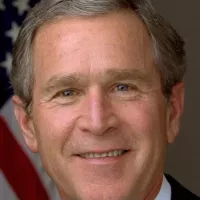
George W Bush served as the rd President of the...
Germany officially the Federal Republic of Germany is a Central...
Russia officially the Russian Federation is a transcontinental country extending...
Trending
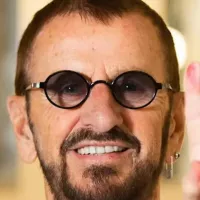
56 minutes ago Beatles Biopics Cast Announced: Actors Chosen to Play Fab Four Members

57 minutes ago A'ja Wilson's new Nike A'One "Ghost" signature shoe release draws crowds and praise.
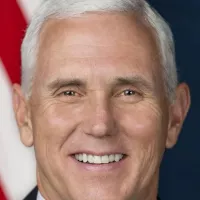
57 minutes ago Mike Pence to receive JFK Profile in Courage Award for election action.

2 hours ago Emoni Bates avoids injury, gets limited playing time. Status and performance updates.
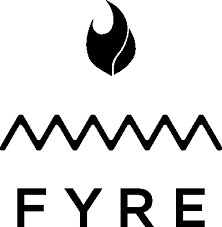
2 hours ago Fyre Festival 2: New Disaster or Triumphant Return? Unseen Lineup, Location Changes Raise Concerns.
2 hours ago FirstEnergy Rate Hike Faces Opposition; Student Arrest Sparks Protest
Popular
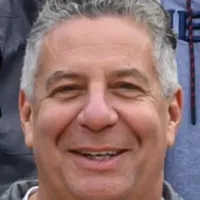
Bruce Pearl is an American college basketball coach currently head...

LeBron James nicknamed King James is a highly decorated American...
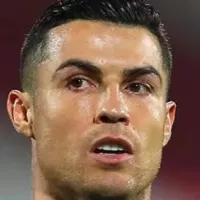
Cristiano Ronaldo nicknamed CR is a Portuguese professional footballer widely...
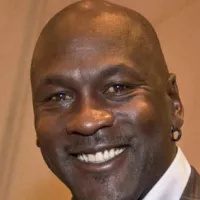
Michael Jordan also known as MJ is a celebrated American...
Facebook is a social media and networking service created in...
The Nintendo Switch is a video game console developed by...
